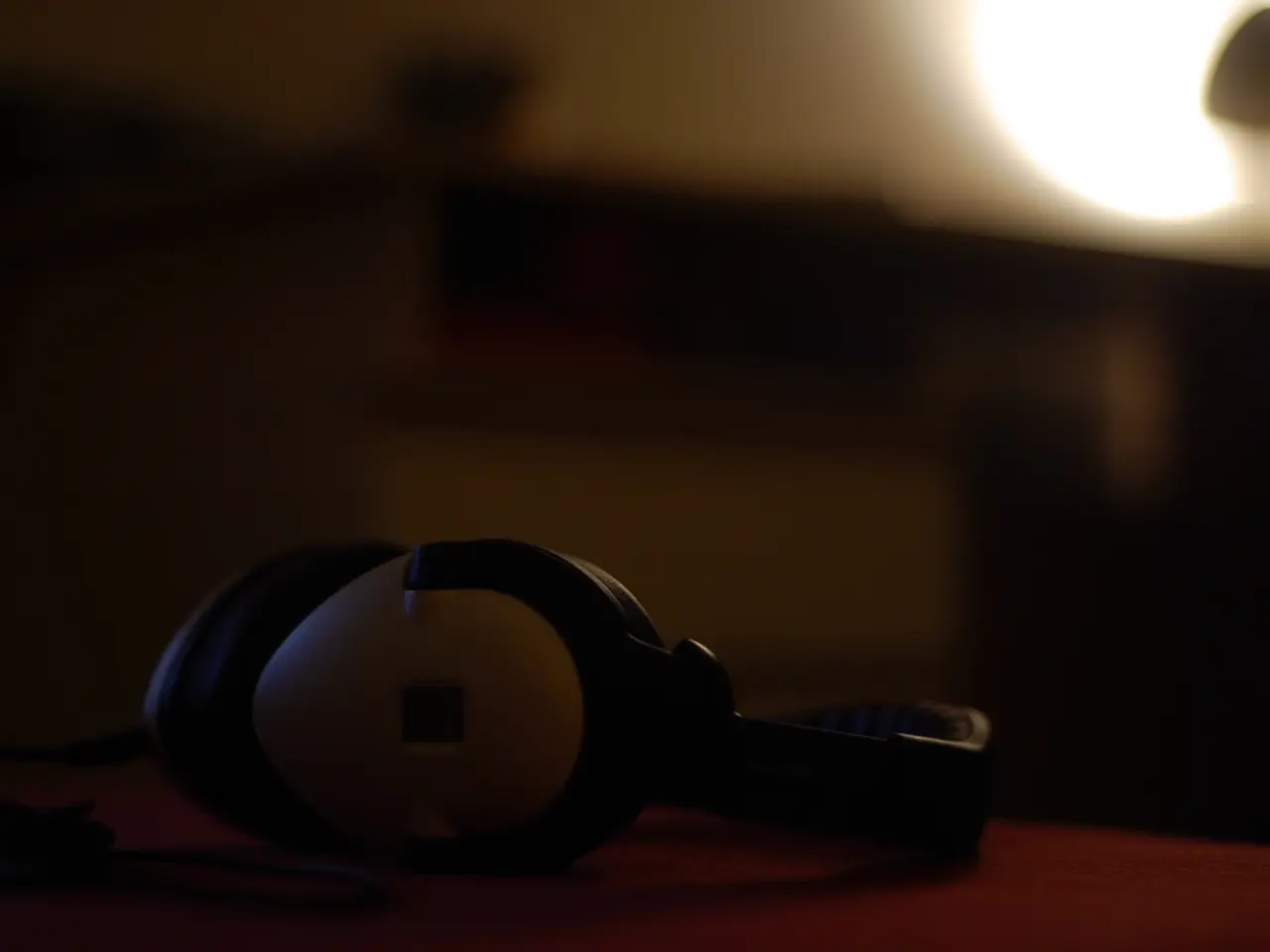Headphones and hearing damage: Exploring potential dangers and additional information
In the digital age, headphones have become a ubiquitous part of our lives. However, their constant use can potentially lead to noise-induced hearing loss. Here's how you can safeguard your hearing.
To minimize the risk of noise-induced hearing loss, experts recommend following the 60/60 rule - listening at no more than 60% volume for a maximum of 60 minutes at a time. Additionally, taking regular 5-minute breaks every hour of listening can help prevent prolonged exposure to loud sounds.
Using the right type of headphones can also make a difference. Noise-canceling or open-ear headphones can reduce background noise, thereby lowering the need for loud volumes. Over-ear headphones, instead of in-ear earbuds, can help reduce direct sound pressure on the eardrum, further limiting potential damage.
It's crucial to maintain low to moderate volume settings. Prolonged exposure to high volumes should be avoided, and the ears need enough rest to recover from noise exposure.
In loud environments, such as concerts, it's advisable to use hearing protection. Regular hearing check-ups are also essential for early detection of any potential damage.
Common warning signs of hearing loss include muffled sounds, difficulty understanding conversations in noisy places, high-pitch sound difficulty, speech consonant difficulty, ringing in ears, asking for repetition, and hypersensitivity to certain sounds. If you experience any of these symptoms, you should consult a doctor.
It's not just headphones that can cause hearing damage. Volume levels should be kept low on televisions, smartphones, and other devices as well. In loud environments or events, ear protection should be used.
Approximately 80% of individuals between 13 and 18 years old use headphones for 1-3 hours daily for music listening. This prolonged exposure can potentially lead to hearing loss, emphasizing the importance of following the preventive measures mentioned above.
If you suspect a hearing problem, a doctor may refer you to an ENT specialist or an audiologist. They can perform a physical examination called otoscopy, which checks the structures of the ear, to diagnose hearing loss.
Remember, even moderate volume levels can cause hearing damage over extended periods. The recommended sound exposure level is 85 dBA to avoid hearing loss.
If you do experience hearing loss, there are several methods doctors can help improve your ability to hear, including hearing aids, middle ear implants, cochlear implants, lip reading, and sign language.
By following these simple yet effective strategies, you can significantly reduce the risk of noise-induced hearing loss from headphone use. Stay safe, and enjoy your music responsibly.
[1] Healthline. (2021). How to Prevent Noise-Induced Hearing Loss. [online] Available at: https://www.healthline.com/health/noise-induced-hearing-loss-prevention
[2] Mayo Clinic. (2021). Noise-induced hearing loss. [online] Available at: https://www.mayoclinic.org/diseases-conditions/noise-induced-hearing-loss/symptoms-causes/syc-20369704
[3] National Institute on Deafness and Other Communication Disorders. (2021). Noise-Induced Hearing Loss: Fact Sheet. [online] Available at: https://www.nidcd.nih.gov/health/noise-induced-hearing-loss
[4] World Health Organization. (2021). Noise and hearing loss. [online] Available at: https://www.who.int/news-room/fact-sheets/detail/noise-and-hearing-loss
[5] American Speech-Language-Hearing Association. (2021). Noise-Induced Hearing Loss. [online] Available at: https://www.asha.org/public/hearing/NIDHL-Adults/
- In the digital age, where headphones have become a staple of our daily lives, adhering to the 60/60 rule and taking regular breaks can help minimize the risk of noise-induced hearing loss.
- To prevent prolonged exposure to loud sounds, experts suggest using noise-canceling or open-ear headphones and limiting volume levels to below 85 dBA.
- In addition to headphones, loud volumes on televisions, smartphones, and other devices can also potentially lead to hearing damage.
- Regular hearing check-ups and using hearing protection in loud environments like concerts are essential for early detection and prevention of noise-induced hearing loss.
- Warning signs of hearing loss include muffled sounds, difficulty hearing in noisy places, and high-pitch sound difficulty; consult a doctor if you experience these symptoms.
- By promoting workplace wellness, employers can incorporate hearing tests and offer guidance on safe listening practices to help employees maintain their hearing health.
- Apart from hearing loss, conditions like chronic kidney disease, cancer, mental health issues, skin care concerns, and chronic diseases can also be managed through various therapies, treatments, and nutrition.
- To enhance overall health and wellness, prioritize fitness and exercise, eye health, and mental health, and never underestimate the benefits of proper skin care.




